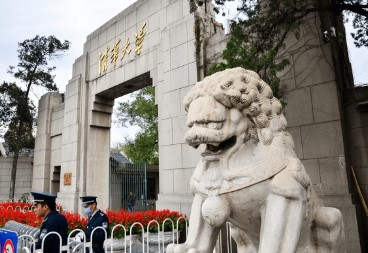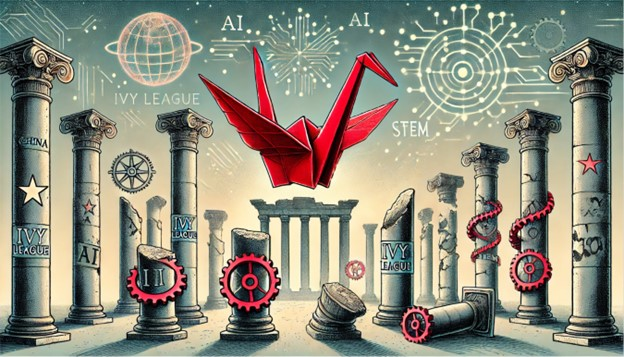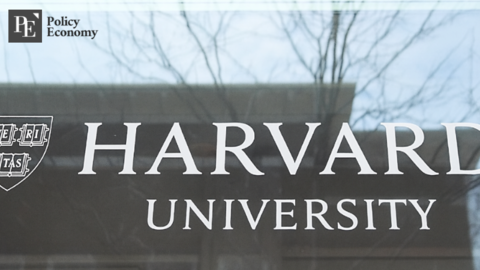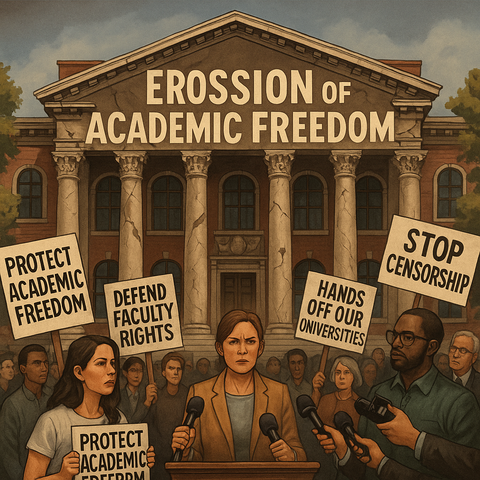A Rising New Academic Superpower: How China Is Redefining Global Higher Education
Input
Modified
Inside China's University Strategy: A Distinct Kind of Dream The Emergence of a New Academic Order: Redefining Global Excellence The East Is the Starting Point for the Future of Global Education

Inside China's University Strategy: A Distinct Kind of Dream
For generations, the gold standard in global higher education has been established by a limited number of elite institutions in the West, including Harvard, Oxford, Stanford, and Cambridge. For an extended period, these names have held the highest positions in the global rankings, attracting students, faculty, and ideas from all corners of the world. Throughout the 20th and early 21st centuries, these universities were regarded as not only models to emulate but also as destinations for the brightest minds of other countries, including China.
However, there has been a change. China is quietly, steadily, and with extraordinary purpose constructing a novel type of university—one that does not aspire to be a replica of the Ivy League, but rather something wholly different. The leading institutions of China are ascending to global prominence by eschewing the Western playbook, driven by national ambition, strategic investment, and an unapologetically homegrown vision.
To traverse the futuristic, streamlined campus of Tsinghua University in Beijing is to comprehend that China's academic ambitions are no longer limited to mere catching up; they are about leading. Traditional classrooms have been replaced by state-of-the-art research laboratories, AI hubs, and tech incubators. In the past, Chinese scholars may have pursued a British fellowship or a graduate school in the United States. They are increasingly opting to remain and construct.
This transformation was not a happenstance. Over the past two decades, the Chinese government has implemented a systematic reorganization of its higher education policy to ensure that it is consistent with the country's overarching political and economic objectives. Flagship initiatives, such as the Double
First-Class Plan, have directed substantial funding to specific universities, thereby propelling them to the forefront of global influence and research output. However, in contrast to Western institutions, which frequently advocate for academic freedom, liberal arts curricula, and interdisciplinary exploration, China's model is highly concentrated. It is thoroughly aligned with the state, goal-oriented, and utilitarian.
Clearly, the emphasis is on the importance of science, technology, engineering, and mathematics (STEM) in the context of China's academic advancement. Artificial intelligence, quantum computing, biotechnology, semiconductor engineering, and renewable energy are prioritized. It is not necessary for professors to engage with undergraduates or experiment with novel teaching methods; rather, they are compensated for publishing in high-impact journals. Undergraduates themselves enroll in highly structured programs that are intended to cultivate technical proficiency rather than encourage open-ended inquiry.
And the outcomes are stupefying. Chinese researchers published twice as many academic papers on chip design and fabrication as their American counterparts between 2018 and 2023, according to the Georgetown University Emerging Technology Observatory. It is even more remarkable that half of the most-cited publications in this discipline were produced by Chinese institutions. This is not solely an increase in production; it is a manifestation of global intellectual leadership.
A distinct vision of national development is at the core of this surge. Chinese universities are not isolated outposts of academic thought that are disconnected from the real world; rather, they are extensions of the country's strategic priorities. The message is consistent: China's universities exist to serve the national mission, whether it is developing self-reliance in semiconductors, advancing leadership in green technologies, or dominating the AI race.
The recent introduction of R1, a novel artificial intelligence model developed by the Chinese startup DeepSeek, serves as a striking illustration of this alignment. R1, despite its dependence on less sophisticated circuitry than its Western counterparts, was able to match the performance of numerous prominent US models. This was more than a technological accomplishment; it was a testament to the academic ecosystem of China, which had developed the talent, research, and capability necessary to construct such innovation within tight constraints.

The Emergence of a New Academic Order: Redefining Global Excellence
Although China's ascent is remarkable, it also presents a challenge to the assumptions that underlie global higher education, not only for Western universities. For decades, the prevailing belief has been that academic excellence necessitates academic freedom, that innovation flourishes in environments where inquiry is unrestricted, and that genuine learning occurs when students are encouraged to query everything.
A distinct paradigm is, however, implemented by universities in China. In disciplines such as the humanities and social sciences, ideological control and censorship persist. However, in the fields of engineering, research and development, and applied sciences, the centralized system has demonstrated an unexpected level of agility and productivity. Critics may argue that China's lack of transparency is a concern; however, advocates contend that its focus and clarity of purpose are producing tangible outcomes.
Nevertheless, that prosperity is not without its drawbacks. Strict boundaries govern the operations of both faculty and students. Political discourse is restricted. Sensitive subjects—particularly those associated with governance, history, or civil society—are frequently prohibited. In return, the state offers unparalleled institutional support, infrastructure, and investment.
This model is not only surviving, but it is also flourishing. Chinese universities are swiftly ascending in global rankings. In specific disciplines, they currently surpass their Western counterparts in terms of global visibility and research impact. Consequently, the traditional knowledge transfer, which was from the East to the West, is beginning to reverse. Chinese universities are enrolling an increasing number of international students. A greater number of international researchers are collaborating with Chinese laboratories. Papers composed in Hangzhou, Shanghai, and Beijing are generating an increasing number of citations.
However, this increase coincides with the escalating tension between the West and China. The United States and its allies have implemented additional restrictions on scientific collaboration in response to Beijing's academic expansion and geopolitical assertiveness. Export controls, visa restrictions, and increased scrutiny of joint research initiatives are now prevalent. The objective is evident: to impede China's advancement and safeguard sensitive technologies.
However, experts caution that these policies may have unintended consequences. The free passage of knowledge, talent, and collaboration is essential for global scientific innovation, as per commentators in The Conversation and The Economist. They contend that isolationist policies could impede the ecosystems they are designed to safeguard. Moreover, there are those who are concerned that the internal challenges in Western education—including declining public investment, political interference, increasing tuition, and cultural division—may more effectively undermine the West's scientific leadership than any action taken by China.
This tension is most evident in the United States. The United States, which was previously the unparalleled leader in global research and higher education, is currently confronted with unprecedented challenges. Research funding has either reached a plateau or has experienced a decline. The implementation of more stringent immigration policies has resulted in a decrease in the enrollment of international students. The capacity of institutions to operate independently has been impacted by public skepticism toward universities, which has been exacerbated by political polarization.
Conversely, China's premier universities are characterized by robust political backing, consistent funding, and a clearly defined national role. They are not impervious to duress, but they are also not neglected. Their objectives are unambiguous, and their accomplishments are becoming increasingly self-evident.

The East Is the Starting Point for the Future of Global Education
The narrative of Chinese universities is no longer one of catching up. It is a narrative of redefinition. China is developing a model that is in accordance with its own priorities, values, and aspirations, rather than replicating Western institutions. In doing so, it is not merely reshaping higher education within its borders; it is also questioning the fundamental assumptions of what it means to be a world-class university.
This transformation is not without its hazards. Independent thinking, dissent, and creativity continue to be indispensable components of significant scholarship. However, the Chinese model illustrates that academic excellence can manifest in a variety of ways, and that the path to global influence may not always resemble Cambridge or Harvard.
Universities will assume a critical position in a world that is being increasingly influenced by technological competition, climate change, and ideological debate. The inquiry is not solely about the institutions that will assume leadership, but also about the nature of the leadership they will offer. China has made a decision. The world at large must now determine how to react—not through dread or imitation, but rather through investment, vision, and a rekindled faith in the ability of knowledge to influence the future.





















